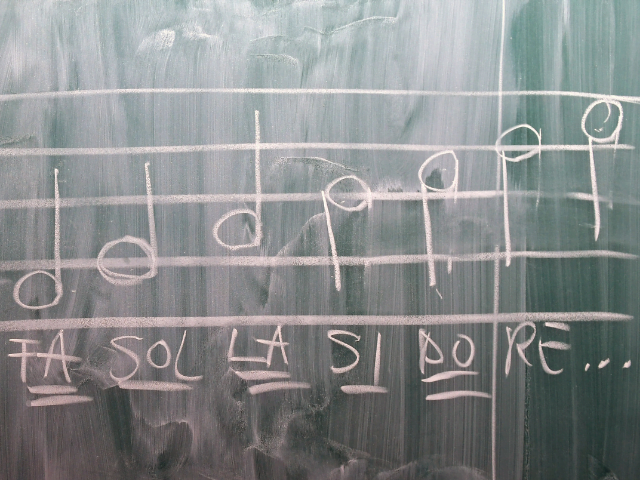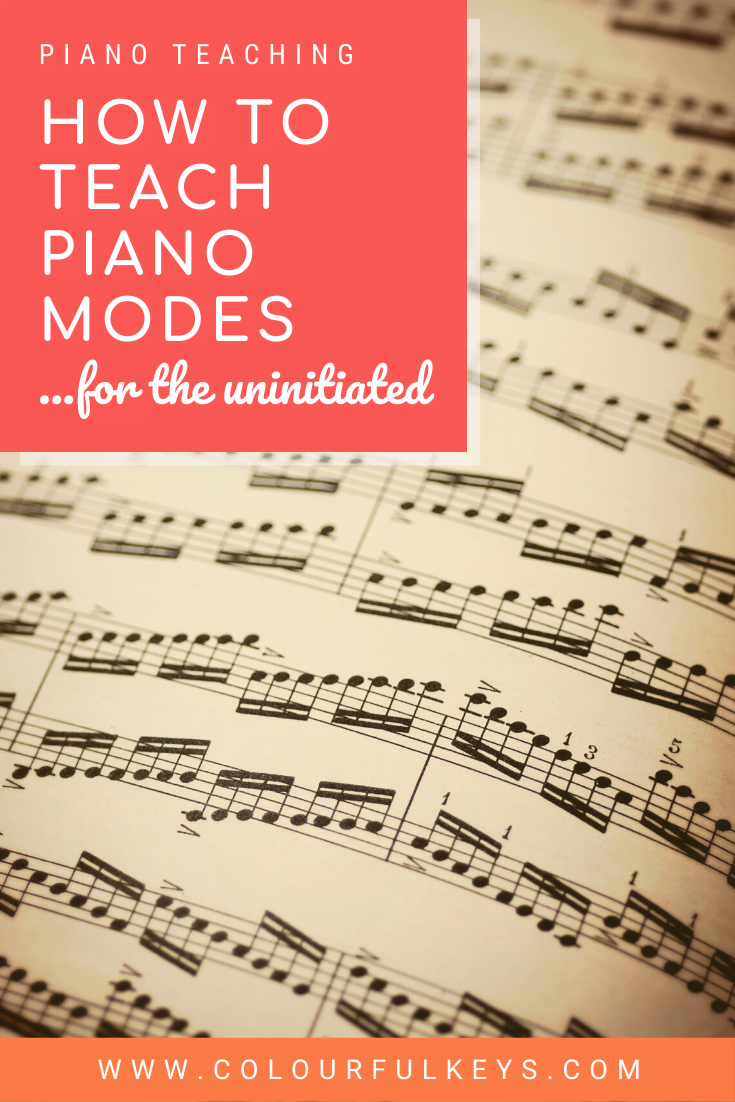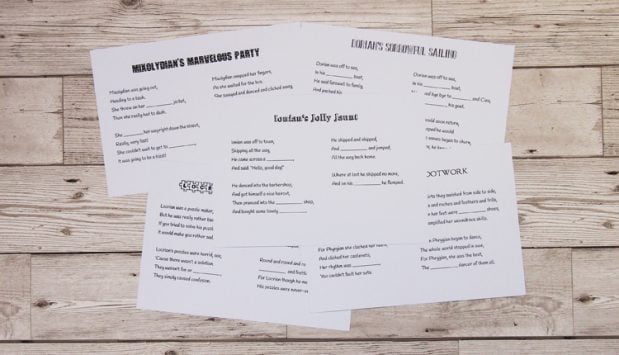Dazed by dorian and muddled by mixolydian? If you don’t teach piano modes in your studio, this article will give you the lowdown on everything modal so you can get started.

⬆️ Listen to the podcast above or keep on reading, whichever fits your style. ↙️
As piano teachers, we’re well equipped to teach major and minor scales. Most of us grew up on a steady diet of them.
Learning how to teach the rest of the piano modes can open up new creative avenues for your students. They can use modes to enhance their improvisations and write expressive and colourful compositions.
Understanding modes is also important so we can understand our pieces. Not everything is written in major or minor!
What in the hockey sticks are modes, anyway?
Back in the day, all scales (sometimes called “church modes”) had a pretty equal footing. Over time, though, two main modes became the popular kids – major (or Ionian) and the minors (which are all based on Aeolian) – and left the other guys in the dust.
The other guys, though, each have their own wonderful flavour.
Here’s a breakdown of each mode and the general feeling associated with it. These are subjective, of course, but useful as a starting point for your exploration.
Ionian
This is the major scale. It’s often described as happy or bright.
Scale example: All the white keys C – C.
Music example: Happy Birthday
Dorian
Dorian is an “almost minor” scale, and can often have a folk-y or mystical sound.
Scale example: All the white keys D – D, or a natural minor scale with a sharpened 6th.
Music example: Scarborough Fair (folk song), or Billie Jean by Michael Jackson
Phrygian
Phrygian has a Spanish twinge and may remind you of Flamenco music.

Scale example: All the white keys from E – E or natural minor scale with flattened 2nd.
Music example: Baby Got Back by Sir Mix-a-Lot (probably not an example you want in your lessons!)
Lydian
The happiest mode to many ears. It’s often described as bright and optimistic, hopeful, futuristic and magical.
Scale example: All the white keys F – F or major scale with a sharpened 4th.
Music example: The Lord of the Rings Rivendell Theme
Mixolydian
This bluesy mode is great for pop music. Where Dorian is almost minor, this is almost major with a little pinch of minor flavour.
Scale example: All the white keys G – G or major scale with a flattened 7th.
Music example: Hey Jude by The Beatles
Aeolian
Our natural minor is often used for sad, mysterious and romantic music.

Scale example: All the white keys A – A or natural minor scale.
Music example: Counting Stars by OneRepublic
Locrian
Very striking, sad, devastating and sometimes anxious. Also quite a challenge to compose in!
Scale example: All the white keys B – B or natural minor with a flattened 2nd and flattened 4th.
Music example: Dust to Dust by John Kirkpatrick
How to Teach Modes to Piano Students
There are 2 ways I like to teach church modes to piano students. I’m not such a fan of using patterns of semitones/tones (whole and half steps), as I think it’s easy to get lost in these. Personally, I prefer the solfa and scale approaches.
Explaining Piano Modes with Solfa
My favourite way to explain modes is using solfa.

If you enjoy using movable do solfa in your studio too, try have your student sing from re to re, mi to mi, fa to fa, etc. This is a great challenge which brings the idea of modes to life and connects the dots to the la-based minor.
Explaining Piano Modes with the C Scale
Another common way to explain modes is to start with the C major scale.
Have your students play each white key pattern C – C and then D – D and then E – E and so on. Ask them to describe in words the feelings, flavours or images elicited by each scale. You might like to improvise with them using the mode, too, for extra inspiration and absorption.
Get Composing
The best way to bring any scale to life is to compose with it. Have your student pick their favourite mode as they learn about them to use as the basis for a new composition.
And when they’re composing in other contexts, make sure to bring up modes as a possibility! This can open new doors in your students’ creativity.
Need help teaching scales or using solfa? You’ll love the resources on my Music Theory hub page.
Resources to Teach Piano Modes
Modes, Book 1 by Forrest Kinney
This is a collection of 11 pieces featuring modes on white keys. While you’re over there make sure to check out Create First as many of these improvisation prompts are modal.
Duets à la Mode by Lisa Donovan Lukas
Fourteen imaginative piano duets showcasing the church modes for one piano, four hands. Each of the seven modes has two pieces (one late elementary/early intermediate and one late intermediate/early advanced).
Memorable Modes
Fill-in-the-blanks stories like these help bring the modes to life. To make this extra fun (and even more memorable) expand the activity into a composing project using the mode and the poem as the lyrics.
Memorable Modes is available for instant download as part of Vibrant Music Teaching membership.
Your One Thing.
Your homework this week is to sing each mode in solfa, pick your favourite then compose a short melody using it. Have fun exploring!
How do you teach piano modes in your studio?
I’d love to hear your thoughts on this in the comments below. 🙂

